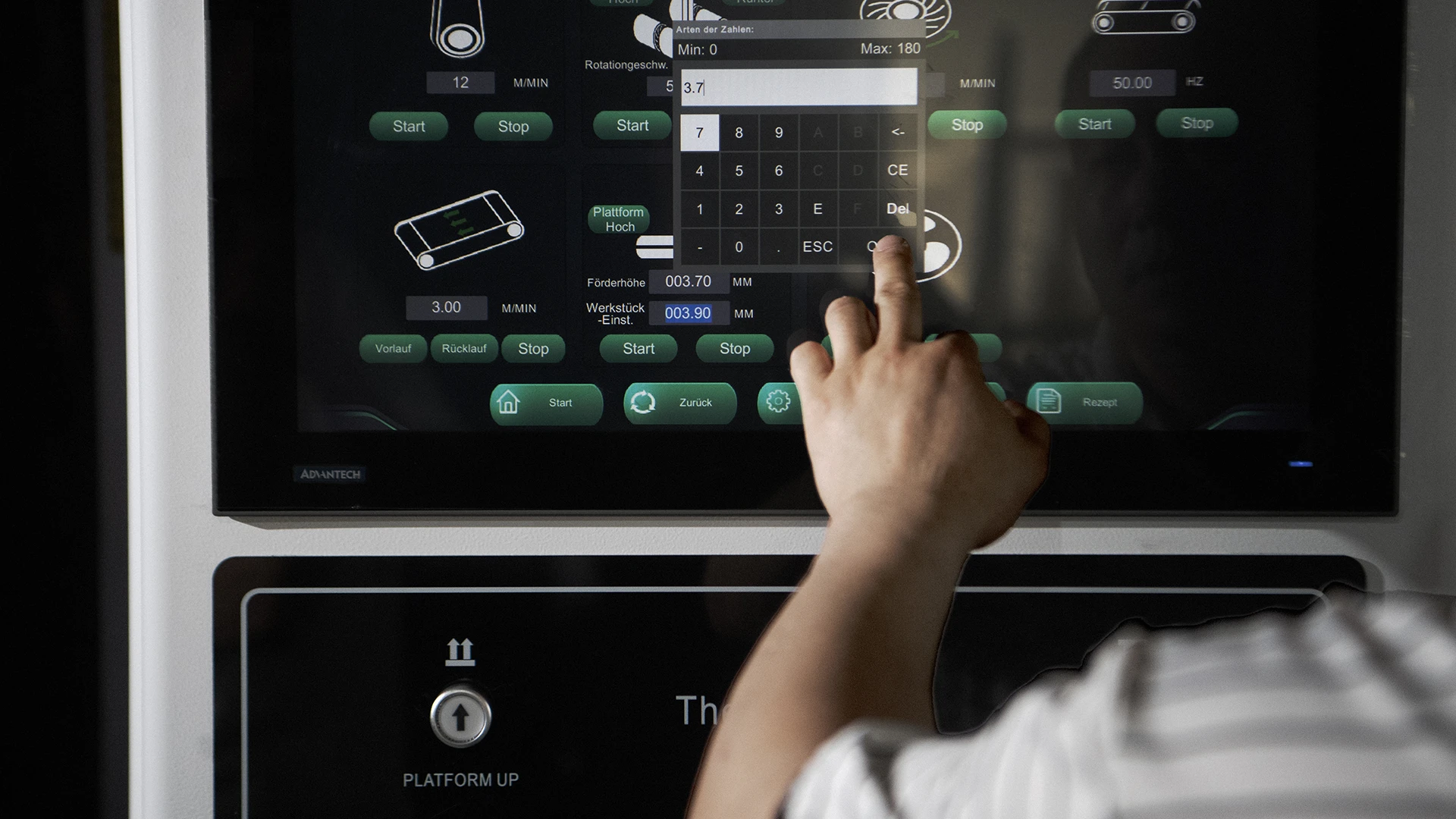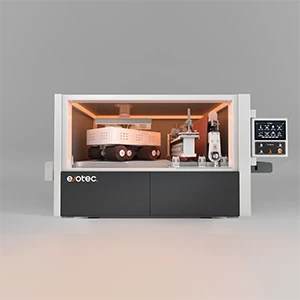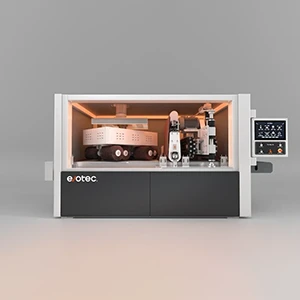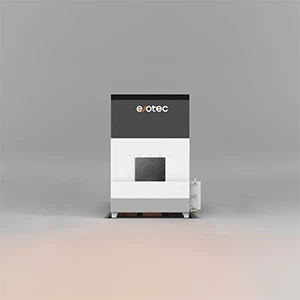The Dynamics of Speed: How Drum Head and Conveyor Control Define Metal Finishing Quality
Precision metal finishing is a science of balance. Too fast, and burrs remain; too slow, and productivity drops. At the center of this equation are two variables that define every result—the drum head speed and the conveyor feed speed. Together, they determine the contact time, removal power, and surface quality of every workpiece that passes through a finishing machine. Understanding how these two elements interact—and how to control them—is key to achieving both speed and perfection on the production floor.

Key Takeaways
The Core Mechanism: Drum Head Meets Conveyor Feed
In Evotec’s finishing systems—such as the EdgeX, Surfex, and SlagMaster series—the drum head (wide abrasive sanding module) and the conveyor belt operate as a synchronized duo. The drum applies the cutting force, while the conveyor governs how long that force acts on the surface.
- Drum Head Speed – Controls abrasive aggression and cutting intensity.
- Conveyor Feed Speed – Controls dwell time and the depth of finish.
The ratio between these two speeds determines whether a part is lightly polished or deeply deburred. This synergy is managed automatically in Evotec machines through the EvoTrack MCS intelligent control system, which aligns both motions for optimal, repeatable results.
How Drum Head and Conveyor Speed Interact
The Physics of Contact
When the drum head speed remains constant:
- Slower conveyor feed → longer contact → more material removal and deeper edge rounding.
- Faster conveyor feed → shorter contact → lighter finishing, ideal for surface polishing.
The combination directly affects burr removal capacity, surface texture, and abrasive wear. Evotec’s AbrasiveSync technology automatically adjusts compensation and pressure to maintain optimal removal power regardless of feed variation.
Advantages and Trade-Offs
Slower Conveyor / Longer Dwell Time
Advantages
- Aggressive deburring and heavy slag removal
- Stronger edge rounding and smoother finishes
- Fewer passes needed for complete cleaning
Trade-Offs
- Reduced throughput per hour
- Higher abrasive wear and potential heat buildup
- Requires strong retention (via AirLock or MagniLock to prevent part movement)
Faster Conveyor / Shorter Dwell Time
Advantages
- Increased productivity and energy efficiency
- Lower heat generation, ideal for thin or delicate materials
- Extended abrasive life
Trade-Offs
- Less aggressive burr removal per pass
- May require additional finishing stages for heavy burrs
Precision Through Automation
The ability to precisely synchronize head and conveyor speed is what separates modern finishing systems from legacy machines.
Evotec’s intelligent automation ensures:
- AbrasiveSync Control – Real-time belt balancing and compensation.
- EvoTrack MCS – Adaptive automation that matches abrasive motion to conveyor pace.
- Parameta Smart Recall – Stores ideal process settings for different materials and burr intensities.
- EvoFlow Conveyor System – Maintains stable retention and vibration-free operation even under high speed.
This synergy produces repeatable, defect-free results across stainless steel, carbon steel, and aluminum parts—without constant manual tuning.
Optimizing for Application

In SlagMaster SS, the dual-drum configuration benefits most from a slower feed speed to maximize slag removal force, while the Surfex SRS excels at line-grain finishing with a higher feed rate and lower drum aggression. The EdgeX SDR uses adjustable drum and conveyor speeds to maintain consistent R2 edge rounding, ensuring perfect preparation for coating and painting.
Conclusion
Finishing excellence isn’t achieved by speed alone—it’s achieved by control.
The relationship between drum head speed and conveyor feed speed is the heartbeat of any deburring machine, dictating everything from material removal rate to surface texture. Evotec’s intelligent automation transforms this relationship into a measurable advantage, delivering precision, productivity, and repeatability that manual methods can’t match.
In modern fabrication, control is power—and speed is only as good as the balance behind it.
FAQs
Q1. How do I find the best balance between drum and conveyor speeds?
A: Begin with Evotec’s recommended presets and adjust incrementally. Slower feeds for heavy burrs; faster feeds for surface refinement. EvoTrack MCS simplifies this balance automatically.
Q2. Can high-speed finishing damage thin materials?
A: If feed is too slow or pressure too high, heat may build up. Evotec’s adaptive pressure and belt control prevent over-processing and protect thin workpieces.
Q3. Does changing conveyor speed affect abrasive lifespan?
A: Yes. Slower feeds increase wear, but AbrasiveSync compensates automatically, extending abrasive life by up to 30%.
Q4. What’s the advantage of variable speed control?
A: It allows you to tailor finishing force to different materials and processes—whether deslagging, deburring, or line-grain polishing—all within the same machine.
Q5. How does automation improve consistency?
A: Automation synchronizes speed, pressure, and dwell time across every cycle, ensuring uniform edge rounding and surface quality regardless of operator or shift.
Call to Action
Ready to optimize your finishing line?
Explore how Evotec’s EdgeX, Surfex, and SlagMaster systems can help you master the balance of speed, precision, and performance.








